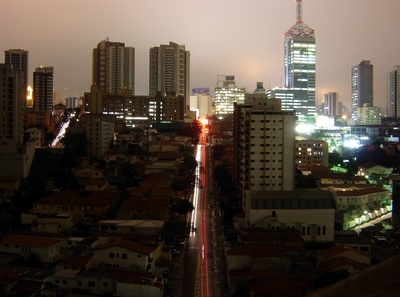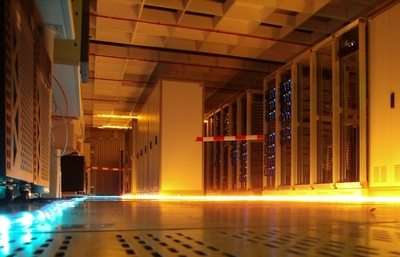What goes down when the lights go out
Friday, 15 February, 2013
Power outages cause minor disruption at best and massive upheaval and economic loss at worst. Diversified industrial manufacturer Eaton Industries tracked power outages across Australia and New Zealand for 12 months and compiled an annual report of its findings. Some of the highlights follow.
One in four power outages and four of the five most significant blackouts occurring in Australia and New Zealand during 2012 were the result of severe weather. The causes included once-in-a-decade storm winds in Perth that left 161,000 people without power, severe winds that damaged poles and brought down lines in Taranaki, North Island, and damaging winds and torrential rainstorms in Sydney. Other common causes of power outages included human error and/or faulty equipment, vehicles, accidents involving vehicles, planned outages and animals.
In total, 94 power outages were reported during 2012, down from 112 in 2011. The number of people affected dropped by almost half to 487,242. The average duration of each blackout was vastly improved, reducing from seven hours in 2011 to just under one and three-quarter hours.

One of the year’s most unusual causes of a blackout occurred in January in Auckland, North Island, when an out-of-control hot air balloon crashed into power lines, sparking a catastrophic fire and cutting power to 3800 homes. Other vehicle accidents included a milk tanker truck that crashed into a power pole in Mataura, South Island, cutting power to 150 customers and spilling more than 12,000 litres of milk into a nearby river, and a crane that struck a power line while being carried on a barge near Swansea in New South Wales. The incident left 18,000 people without power.
The report once again confirmed that animals and power lines are a bad combination for both humans and animals. A February power outage that affected some 12,000 customers in Sydney was caused when a small, rogue possum came in contact with electrical equipment at a substation, resulting in a short circuit and the possum’s demise.
Two outages were reported at data centres during the year. One, at Google’s data centre in Sydney, in June, briefly derailed services across Australia and New Zealand. No explanation was given for the outage. The second, at Equinix in Sydney, during November, caused up to three-hour delays for thousands of passengers flying with three major airlines from Australian airports. Equinix said the incident occurred after the facility experienced a short interruption to power that affected HVAC systems.
“It’s almost impossible to ascertain the financial impact of such outages but it is reasonable to expect that the effects were significant. In addition to lost revenues and disruption for the businesses and their clients, outages frequently involve costs for detection, containment and recovery. There may be equipment and third-party expenses to be met,” says Michael Mallia, Marketing Manager, Eaton’s Power Quality division. “Given the importance of the data centre to business continuity, every organisation should actively mitigate risk by ensuring their centre is properly equipped with surge protectors, uninterruptible power supplies and generators.”
In total, the North Island of New Zealand reported the greatest number of outages (30), followed by New South Wales (18), the South Island of New Zealand (16), Queensland (12), Victoria (9), Western Australia (5), South Australia (3) and the Northern Territory (1). For the second year running, no outages were reported in the Australian Capital Territory.
Productivity and monetary loss
The losses from a power failure can be extensive and of great consequence. For a business, the recovery time is significant and the costs are high. According to Price Waterhouse research, after a power outage disrupts IT systems:
- 33+% of companies take more than a day to recover
- 10% of companies take more than a week
- It can take up to 48 hours to reconfigure a network
- It can take days or weeks to re-enter lost data
- 90% of companies that experience a computer disaster and don’t have a survival plan go out of business within 18 months
Financially, power outages can translate to substantial losses for the company affected. According to the US Department of Energy, when a power failure disrupts IT systems:
- 33% of companies lose AU$18,500-$465,000 or NZ$24,000-$600,000 (US$20,000-$500,000)
- 20% lose AU$465,000-$1,860,000 or NZ$600,000-$2,400,000 (US$500,000-$2 million)
- 15% lose more than AU$1,860,000 or NZ$2,400,000 (US$2 million)
Currency conversion used: 1 USD = .93 AUD = 1.20 NZD
Data centre outages
While almost all power outages produce some type of negative consequence - ranging from a minor inconvenience to massive financial implications - those affecting data centres often take the most serious financial toll. In fact, a February 2011 study conducted by Ponemon Institute found the average cost of a data centre outage to be more than $505,500 per incident - with some organisations experiencing in excess of $1 million in damages.

In addition to lost revenues and business disruptions, there are a variety of core process-related activities that drive expenditures during an unplanned outage. The costs for detection, containment, recovery, ex-post recovery, equipment and third-party costs must all be taken into consideration, as well as losses related to IT and user productivity.
Below are two reported data centre outages in Australia this year that were caused by power issues. Please note that it is difficult to ascertain the financial impact of the outages, but in many cases, it is reasonable to expect that they were significant.
1. Google, 8 June - Sydney, New South Wales: The web giant had services derailed in New Zealand and Australia due to the power outage in its Sydney data centre, which has peering points for Google. Users like Optus, iiNet and Internode reported having very slow or no access to Google services. The cause of the power cut was not reported.
2. Equinix, 10 November - Sydney, New South Wales: A brief cut at an Equinix data centre caused up to three-hour delays for thousands of passengers flying with three major airlines from Australian airports. Equinix said the incident occurred after the facility experienced a short interruption to power that affected HVAC systems.
Pros and cons of underground power lines
With approximately 26% of reported outages caused by weather-related incidents and another 12% caused by vehicle accidents, why aren’t all power lines put underground? After a large storm - particularly one involving strong winds, heavy rain and lightning - questions are frequently asked about power lines, which are often downed by falling trees during powerful storms. So why aren’t all power lines buried underground, which would eliminate the chance of weather-related outages? Also, many vehicle-related power failures could be avoided with buried power lines. In addition, removing above-ground power lines from view would be much more aesthetically pleasing.
The main issue with placing lines underground is cost. According to several studies on the subject, the installation of underground transmission lines costs about $5 million per mile - 10 times the cost of overhead lines. These power lines, often suspended by large towers, bring high-voltage electricity to transformers, which in turn step down the voltage for distribution. Installation of underground distribution power lines - bringing lower-voltage electricity to homes and schools - also costs approximately $1 million per mile, once again representing 10 times the cost of overhead lines. There are also increased costs for maintenance and repair of lines that are underground. Outages caused by problems with underground lines last longer than those related to overhead lines, and rate increases to cover these increased costs were estimated at a whopping 125%.
In addition, underground systems, while inherently less prone to weather-related problems, are susceptible to flooding. Salt water further exacerbates the problems.The results of most studies suggest that the price to bury power lines is generally cost-prohibitive. The cost becomes more reasonable if an entire development is being excavated and the power lines can be buried as part of the process. Another exception is in large cities where aboveground space is at a premium and underground infrastructure already exists.
Zero tolerance for power outages?
Is the inability to recharge your mobile phone enough to throw you into a tizzy? Many Americans cannot tolerate the inconveniences of even a brief power outage, citing the loss of air conditioning and heat, and the inability to recharge mobile devices, entertainment and digital data among the most unpleasant consequences. In fact, unless an outage is caused by an extreme weather event, 100% uptime is the expectation of more than one-quarter of respondents, who said they believe they should never experience an electricity outage. These and other findings were collected during the first Reliability Demand Survey, conducted in April 2012 by YouGov Definitive Insights.
Sponsored by Build Energy America and Potomac Communications Group, the study gauged the opinion of more than 500 Americans and found that “an increasing hypersensitive segment of the public has developed a low tolerance for any outages”, according to Steven Mitnick of Build Energy America. In fact, more than one-third of the public wouldn’t accept a two-day outage even if they were paid as much as $1000 for the inconvenience. Even more, 45% said they would pay their utility up to $40 more per month if power outages could be kept to 4 hours or less - a fee that 55% of those living in the heat of the South promised.
What can businesses do to protect themselves?
The most important thing a business can do is develop a power protection plan, incorporating some form of uninterruptible power systems (UPS), battery backup products and standby or portable generators. For more information, or to download a copy of the complete Blackout Tracker report, go to the Eaton Industries site - http://powerquality.eaton.com/australia - and search “Blackout Tracker”.
The case for standalone power
With much of Australia's critical infrastructure vulnerable to extreme weather, standalone...
How to avoid a US electricity crisis?
A meeting of energy experts organised by Stanford University has come up with six big ideas for...
How power and control cables form the backbone of industrial automation
In this article, cable company LAPP explores the various characteristics and applications of...




